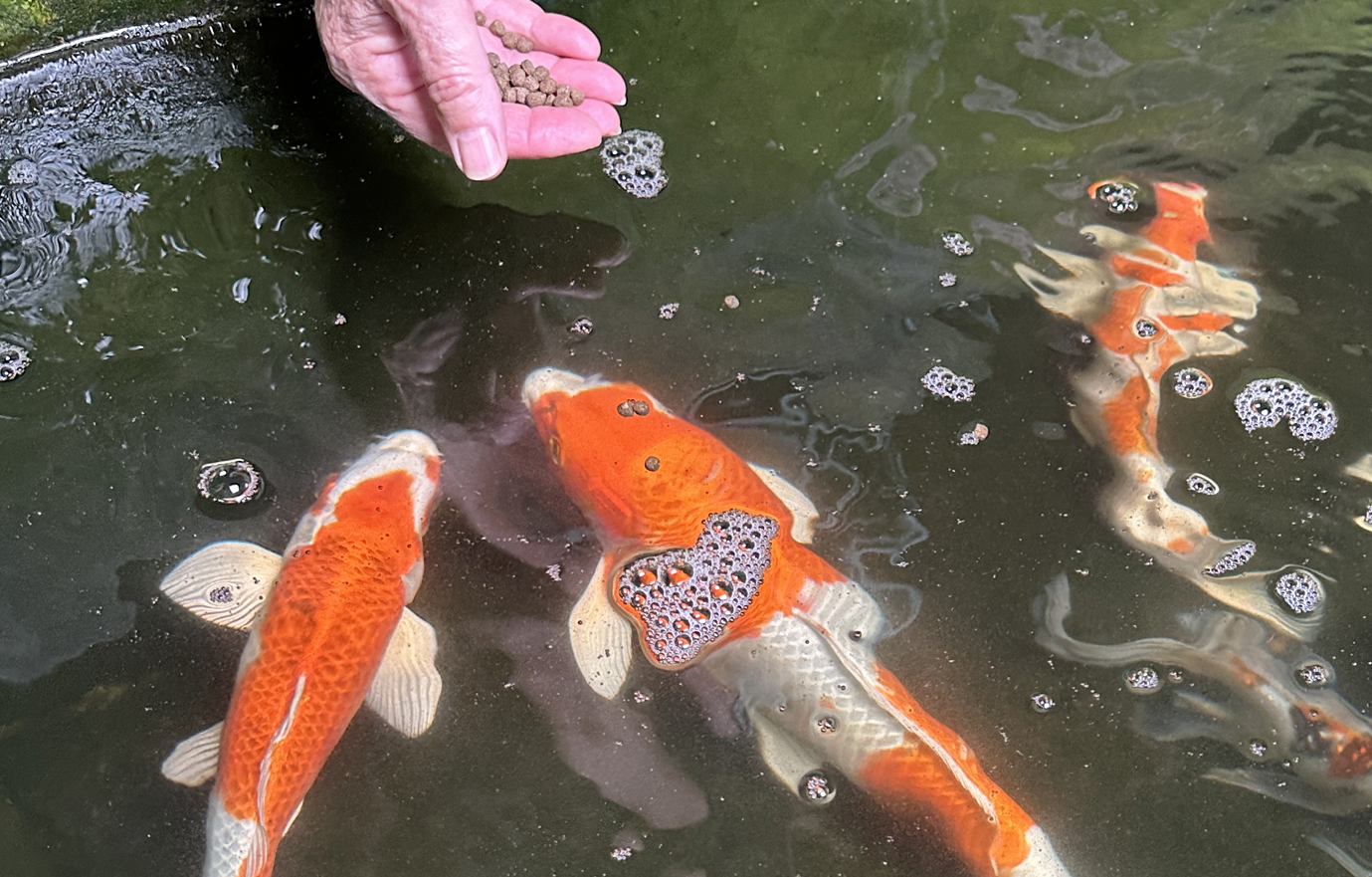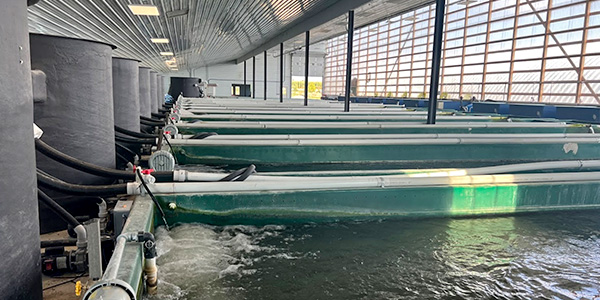Hand Feeding Koi: Tips And Tricks
Posted by Kloubec Koi Farm on 26th Sep 2024

Hand feeding koi requires patience, consistency, and a calm approach. Begin by using a floating koi food your fish are familiar with, feeding them at the same time and location daily. Choose a quiet spot with deep water to make the koi feel secure. Sit still by the pond, gradually introducing your hand into the water as they get used to your presence. The boldest koi will approach first, and over time, others will follow. Using tools like a feeding ring or a bait ball can aid the process, while hunger acts as a motivator. Persistence and routine are key to success.
Many koi owners hope to hand feed their koi and yearn for this interaction with their pets. Training your pet koi fish to eat from your hand takes a lot of patience and perseverance. Hand feeding your koi may be easier said than done, but when accomplished it is most rewarding. It’s always great fun to amaze visitors with the astonishing feat that you and you pets have mastered. And it’s a sure-fire way to get the non-believers to join the koi hobby as being glorious fun.
Usually, the koi collection will have a leader who is always willing to come close and investigate any movement or sound at ponds edge. That fish may be your best chance at successfully training the others to eat from your hand. Training koi to hand feed takes time and you must be patient. Remember that “Rome wasn’t built in a day”, nor will your koi learn to accept food from the hand of a human at first try.
How to Hand Feed Your Koi
Start with a flavorful and floating koi food that your fish like to eat. Don’t try to entice them to eat something that they are unfamiliar with. Your fish need to gain trust and not be frightened by your presence. Feed your koi normally for several days, but stay motionless by the pond. Stay there until all food is consumed. Go to the pond at the same time every day to feed. Choose a spot where the water has sufficient depth so your fish can approach from underneath, rather than gliding on the surface; a.k.a. ‘Shamu the Killer Whale’ swooshing up on the deck to wave at the crowd! Ample water depth gives koi a sense of security, and the fear of being beached and caught by an intruder is diminished. It is also best to feed in calm water, away from waterfalls, bubblers and turbulence.
Next, sit very quietly by the pond with little or no movement. When the koi become accustomed to your presence slowly reach out to dispense some pellets by putting your hand on the pond water, and then slowly withdraw your hand. Sit VERY still. The bravest or hungriest koi will be the first to approach. When the pellets have all been consumed SLOWLY extend your hand and release a few more pellets. Do this several times. Then slowly get up and leave. Do not offer food at any other time, only than when you are at the hand feeding location. Hunger is a good motivator. And it is best to stick to a routine. As the koi learn this routine they will be eager to participate in the feeding game. And as they get hungrier the more eager they will become. Soon you’ll have them eating out of your hand.
Another suggestion for training koi to hand feed is with the aid of a floating style feeding ring to lure koi to the desired area. A feeding ring ensures that koi food does not float away and trains the koi to feed at your chosen location. Toss floating koi food pellets into the ring. Once the fish expect to find feed here you can slowly put your hand under the water while they are eating. Keep your hand very still. After the fish are no longer afraid of your presence begin reaching into the ring with a fistful of yummy pellets. Don’t remove your hand until koi begin to eat.
Yet another method in the quest for hand-fed koi is to use a homemade koi food bait ball. First you must make the bait. You will need an old nylon stocking or a piece of fine mesh fabric such as cheese cloth, fishing line, and a rock or weight. Place approximately ½ cup of koi food pellets into the stocking or fabric, and tie tightly to form a bait ball. Next, attach a length of fishing line. This is the bait ball that you will use in your attempt to hand feed your koi.
Now, tie the line securely to the rock or weight and let the bait dangle in the water close to the edge, ideally at 1-2 foot distance from pond edge. Leave the bait ball anchored in place so it remains in the pond water. Koi are inquisitive and will check out anything new, especially if the object smells like something good to eat. The koi will spend a lot of time playing with the bait ball trying to slurp the food through the mesh. Return every few hours and approach the feeding spot very slowly and sit motionless near the bait. You may need to refill the ball multiple times over several days. Soon your fish will recognize you as an extension of the bait and not feel threatened. Slowly but surely you will be able to draw the bait closer until it is in your hand. Gradually you will be able to switch from using the bait ball to offering pellets directly by hand.
How to Make a Feeding Ring for Koi:
A feeding ring for koi fish can be easily made from short pieces of PVC pipe. Glue pieces together with appropriate sized elbow fittings to form a square or octagon. Use ample glue to seal joints ensuring it is water tight and will float. Allow the glue to dry completely. Anchor the ring to pond edge with a string or fishing line.
Do some koi feed train faster than others?
Yes, some varieties will feed train faster than others. The friendliest varieties of koi are Chagoi, Kigoi and Ochiba Shigure. These varieties usually take to hand feeding quickly and others in the pond will follow soon thereafter.
More Koi Hand Feeding Tips:
- Be patient. Be quiet. Be calm. Be consistent. You need to build trust.
- Don’t rush it. If you don’t have enough time to devote to the hand feeding today then skip it.
- Use treats like shrimp, lettuce or watermelon as extra incentive once koi become accustomed to eating from your hand.
- Koi are grazers meaning they nibble most of the time.
- Offer food by hand only. Do not give food otherwise. Hunger will encourage the koi to come close to get food.
- Use a hula-hoop as a feeding ring.
- Try not to be startled when a fish brushes against your hand underwater. Remember, this is what you want.
- If at first you don’t succeed, try, try again.


